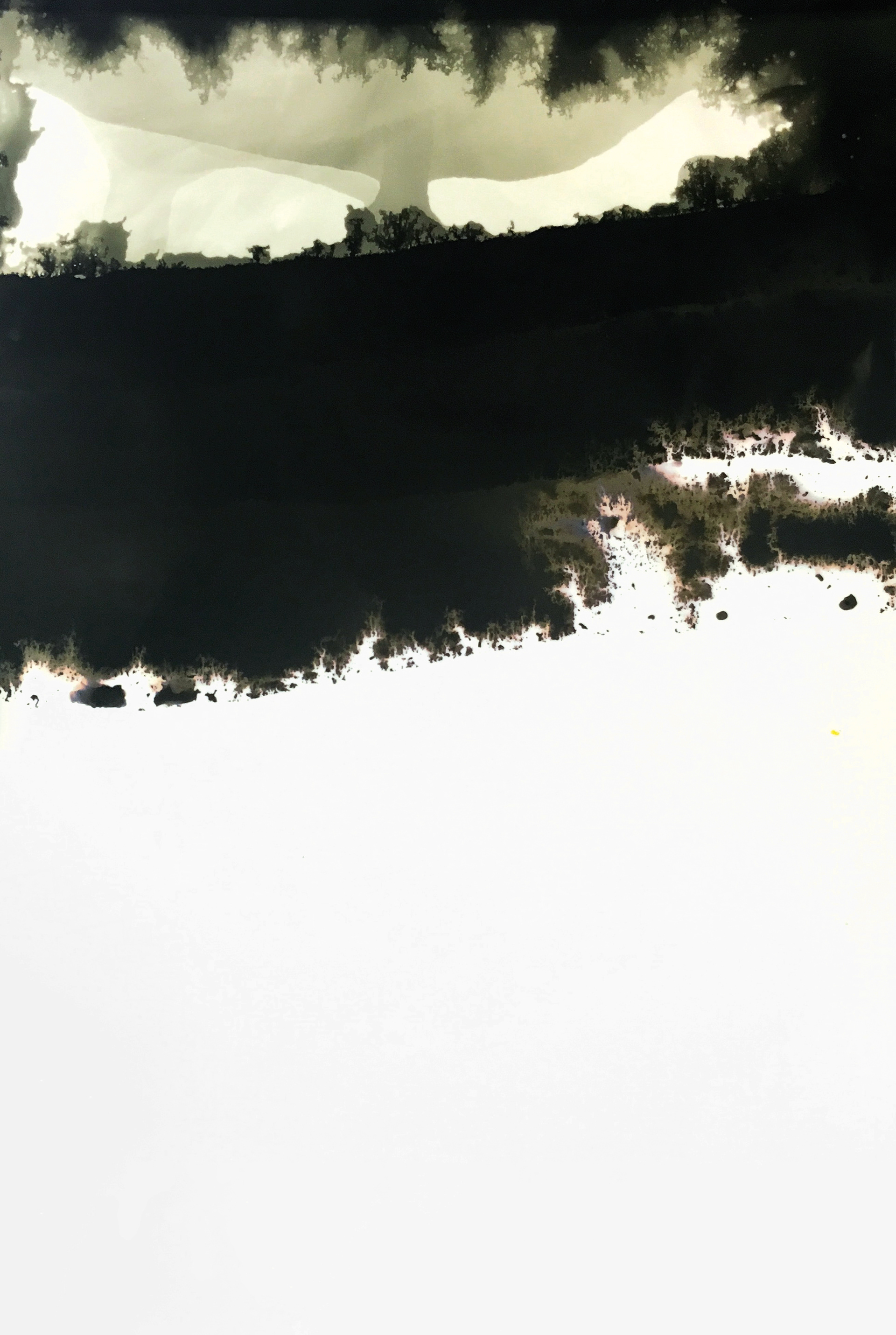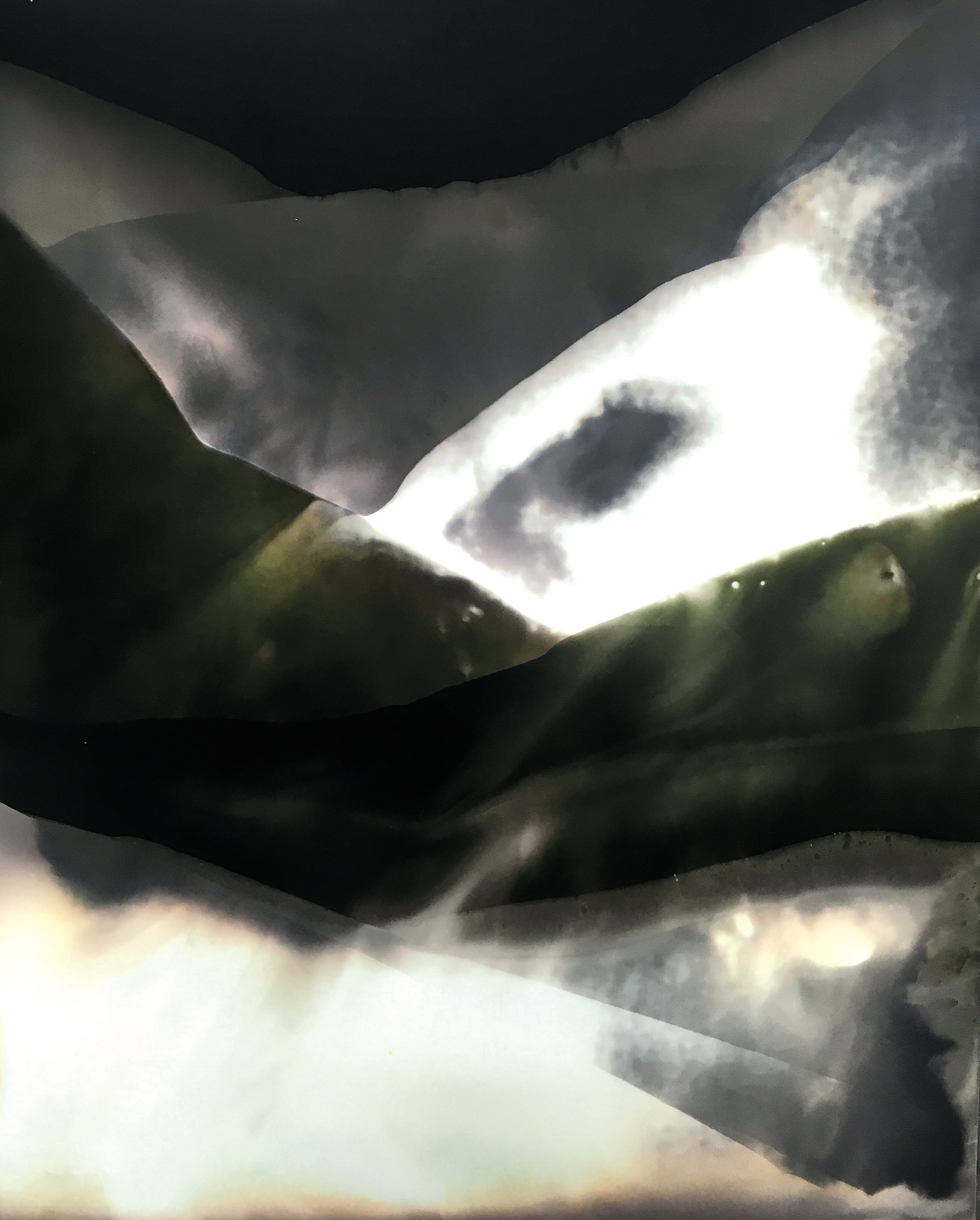2017
Dieser Experimentelle Kurs während meines Auslandssemesters führte mich in die fotografischen Prozesse des 19. Jahrhunderts ein: Chemigramme, Cyanotypien und Ferrotypien.
Dieser Experimentelle Kurs während meines Auslandssemesters führte mich in die fotografischen Prozesse des 19. Jahrhunderts ein: Chemigramme, Cyanotypien und Ferrotypien.
Für meine eigene Arbeit wählte ich die australische Natur als Thema, die doch so andersartig erscheint zur mir gewohnten europäischen. Schon in einem gewöhnlichen australischen Wald findet sich eine bestechende Schönheit, die Natur dort ist rau und wild, auf eine Art wirkt sie sogar unirdisch.
Diesen Umstand versuchte ich mittels den jeweiligen fotografischen Techniken einzufangen.
Die Arbeiten waren im November 2017 in der Australian National University, Canberra, Australien, zu sehen.
This experimental course during my semester abroad introduced me to the photographic processes of the 19th century: chemigrams, cyanotypes and ferrotypes.
For my own work, I chose Australian nature as the subject that seems so different from the European nature I am used to. Even in an ordinary Australian forest there is a captivating beauty, the nature there is rough and wild, in a way it even looks otherworldly.
I tried to capture this with the respective photographic techniques.
The work was shown in November 2017 at the Australian National University, Canberra, Australia.




Ausstellung im Atrium der Australian National University, Canberra, Australien
Ferrotypien
Ein Workshop mit dem australischen Künstler Craig Tuffin führte mich an die Ferrotypie-Technik heran (Bild oben). Beschichtete feuchte Aluminiumplatten werden entweder für Fotogramme oder, mittels einer Großformatkamera, für Fotografien verwendet. In Anlehnung an mein Thema arbeitete ich mit Negativen und Pflanzen der australischen Natur.
Tintype
A workshop with the Australian artist Craig Tuffin introduced me to the tintype technique (picture above). Coated aluminum plates are used either for photograms or, using a large format camera, for photographs. In line with my topic, I worked with negatives and plants from Australian nature.









Chemigramme
Für Chemigramme braucht es lediglich Fixierer, Entwickler, Wasser und lichtempfindliches Fotopapier.
Umso erstaunlicher waren die Ergebnisse meiner Experimente. Es ergab sich eine außergewöhnliche Komposition von kleinen Effekten, die wie Naturfragmente wirkten – neblige Wälder mit einer Andeutung von Licht und Wolken, Bergen, Bäumen und Seen, oder was immer der Betrachter selbst in ihnen sehen will.
Chemigrams
All that is needed for chemigrams is fixer, developer, water and light-sensitive photo paper.
The results of my experiments were all the more astonishing. The outcome was an extraordinary composition of small effects that looked like natural fragments - foggy forests with a hint of light and clouds, mountains, trees and lakes, or whatever the viewer wants to see in them.

Cyanotypien
Mit einer Beschichtung aus Ammonium und Kalium und einer bestimmten Belichtungszeit in der Sonne entsteht eine Cyanotypie in Form eines blauen Fotogramms.
Ich habe Fotonegative mit australischen Pflanzen und Vögeln mit echten Pflanzen zusammengefügt, um mit der Kreation von Überlappungen, Verfall, Aufblühen oder Wildheit zu experimentieren, ähnlich wie die Natur selbst.
Das verwendete Papier für mein Endprojekt ist mit einer Pappmaché-Methode handgemacht.
Cyanotypes
With a coating of ammonium and potassium and a certain exposure time in the suna cyanotype is created in the form of a blue photogram.
I have merged photo negatives with Australian plants and birds with real plants to experiment with creating overlaps, decay, blooming or wildness, much like nature itself.
The paper used for my final project is handcrafted using a paper mache method.




